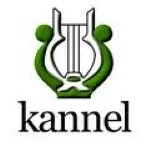Net Neutrality Simplified – Information super-highway analogy
During this discussion, a very interesting analogy was made with respect to the information super-highway. I am extending that analogy into a story-board, and which I feel would serve as a helpful tool to understand net neutrality.
First we will review the official FCC broadband policy statement which defines Net Neutrality, and then we will look at the analogy.
Official Regulation in the US:
According to the FCC broadband policy statement, Net Neutrality regulations are defined for both wireless and fixed broadband providers.
Wireless providers need to follow the definition below, while for fixed broadband providers some additional rules apply.
Definition of Net Neutrality (for wireless providers):
“To encourage broadband deployment and preserve and promote the open and interconnected nature of the public Internet, consumers are entitled to:”
- access the lawful Internet content of their choice.
- run applications and use services of their choice, subject to the needs of law enforcement.
- connect their choice of legal devices that do not harm the network.
- competition among network providers, application and service providers, and content providers.
Additional rules which apply for fixed broadband providers are as follows:
Transparency: Fixed and mobile broadband providers must disclose the network management practices, performance characteristics, and terms and conditions of their broadband services
No blocking: Fixed broadband providers may not block lawful content, applications, services, or non-harmful devices; mobile broadband providers may not block lawful websites, or block applications that compete with their voice or video telephony services.
No unreasonable discrimination: Fixed broadband providers may not unreasonably discriminate in transmitting lawful network traffic.
In our analogy, we will combine the definitions above.
The Information super-highway analogy:
Consider a multi-lane highway which has several toll booths installed at the very start on a toll station. Let us call this the information super highway.
Vehicle owners need to pay a certain amount as toll tax whenever they traverse the toll booth. These vehicle owners can choose which toll booth they queue up at, depending upon their previous quality of experience on that booth.
For example, a certain toll booth may process vehicles very slowly and hence provides an inferior customer experience with respect to another booth..and so on.
Let us consider these vehicle owners as customers, and let us consider the toll booths as network service providers (carriers).
The toll station has a certain governance structure in place. Let this governance structure be the regulator.
Let the toll tax be the rating/charging plan of the carrier levied on the customer.
The story gets interesting once the customers pass the toll booth after paying their tax.
As a customer, as long as I pay my toll tax I have complete freedom to access the information present on the super-highway. On both sides of the super-highway we have huge digital “marts” – such as the facebooks of the world, and the Googles of the world. Each digital mart has its own nuances, its own services, its own pros and its own cons.
The best part is, that all products and services offered by these marts are “free” for the customers!
In order to attract customers and merchants alike, these marts offer advertising programs and provide benefit points as part of a well structured points program.
Usually, customers park their cars in one of these digital marts to enjoy their products and services freely.
This is where one of the core concepts of net neutrality resonate – that customers are free to consume lawful content of their choice.
However, service providers also have some small, less glamorous road-side marts which offer services to the same customers. Hence, the operator-controlled digital marts are in direct competition to the OTT player controlled digital marts.
Some of these OTT digital marts also provide shop-space to individual digital retail providers. Let these individuals be the “developers” who use the OTT APIs to develop their apps – that run on android, IOS, Facebook widgets etc.
All these ecosystem players are competing against one another.
At this point, another core concept of net neutrality resonates – “competition among network providers, application and service providers, and content providers.”
The problem:
As expected, the carrier controlled digital marts get fewer customers as opposed to the OTT player digital marts. The reasons are several, and we will not get into that analysis here.
As a result, the carrier controlled marts lose out on revenues made and also find it difficult to recover their CAPEX / OPEX which they had invested in building their digital marts, as well as the information super-highway itself !
Moreover, there is constant pressure of more traffic on the information super-highway, and these carriers have to periodically invest in increasing the capacity of the super-highway by adding more lanes, so that they can cater to the ever- increasing demand. This results in more CAPEX outflows by the carrier.
As soon as the new lane is added, it only adds to the woes of the carriers, as more customers throng the OTT digital marts and lead to congestion on the super-highway. A new lane is added with every technological evolution in wireless standards- from 2G, through 3G and now 4G wireless networks – thus offering customers increased bandwidth.
Some operators build cheaper by-lanes to the information super-highway to offload some traffic. These by-lanes are Wi-Fi offload by-lanes. This provides only temporary help in reducing network congestion, but the major problem still remains.
Knee-Jerk Reactions:
In order to reduce congestion, some carriers resort to bandwidth throttling – by employing speed breakers in front of OTT digital marts. This is not a fair thing to do, as service providers may not unreasonably discriminate in transmitting lawful network traffic. (See rules above).
Some carriers resort to heavy volume based charging strategies if customers are heavy users of OTT services. All these steps are retrograde in my opinion, as you cannot charge a heavier toll tax based on which digital mart the customer intends to visit. The customer is entitled to choose and consume products and services freely on the information super highway.
Probable Solutions:
There are two solutions to this catch-22 situation:
1. Build a policy aware network.
2. Save on servers and infrastructure CAPEX by moving to a virtualized IaaS cloud. Use these savings to build a bigger and better digital mart to challenge the OTT players.
The first option is immediately feasible with the advent of LTE networks and the Evolved Packet Core (EPC), which define nine QCI levels in the wireless standard. The PCRF node in the EPC is the nerve center for policy rules and QoS.
The second option is a bit dramatic, but can be an option. Some people would argue that the cloud business model is not proven, and that the savings on infrastructure may not be significant. I feel that rather than blindly investing heavily on infrastructure all the time, carriers can evaluate cloud based IaaS solutions and invest more on building their own digital marts to challenge the facebooks and the googles of the world.
This may sound to be an outrageous idea as of today, but you never know if a cool social network platform may click with customers and give the OTT players a run for their money. The operator holds valuable information about his customers, and this information can be used to give a more personalized customer experience in the digital mart ! Put policy, QoS and bandwidth boost in the mix, and these can act as critical differentiations. Furthermore, add reliable HD video communications capabilities to complete the customer experience.
A good customer care system coupled with a reliable policy controlled digital mart can become a competitor to OTT marts, only if the operators think in this direction and give this possibility a chance.
Food for thought ?
Reference: Net Neutrality Simplified – Information super-highway analogy from our JCG partner Aayush at the Aayush: weblog.
Related Articles :






